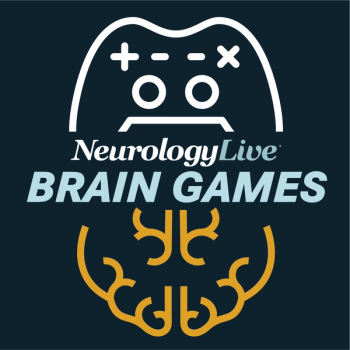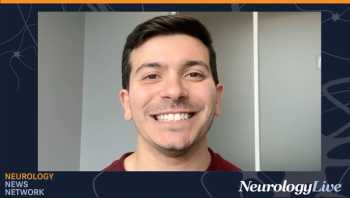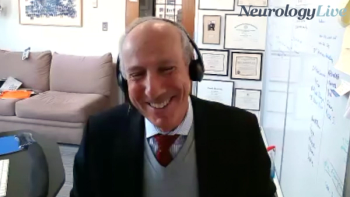
Regeneron to Submit Application for Cemdisiran in Myasthenia Gravis Following Positive Phase 3 NIMBLE Data
Key Takeaways
- Cemdisiran monotherapy showed significant efficacy in gMG, outperforming placebo and demonstrating a favorable safety profile with quarterly administration.
- The NIMBLE trial results support cemdisiran's potential as a best-in-class therapy for gMG, with robust efficacy and a convenient administration schedule.
Regeneron's cemdisiran shows promising results in treating generalized myasthenia gravis, paving the way for a potential new drug application in 2026.
Updates from the phase 3 NIMBLE trial (NCT05070858) revealed that investigational cemdisiran (Regeneron) met its primary and key secondary end points, demonstrating statistically significant effects as a monotherapy in patients with generalized myasthenia gravis (gMG). Based on these findings, Regeneron is planning to submit a new drug application (NDA) for cemdisiran as a monotherapy in the first quarter of 2026, pending discussions with the FDA.1
NIMBLE, a double-blind trial, randomly assigned adults with gMG to either cemdisiran monotherapy (n = 64) every 12 weeks, a combination of cemdisiran and pozelimab (n = 67; “cemdi-poze”) every 4 weeks, or placebo (n = 59) every 4 weeks for a 24-week treatment period. Cemdisiran is a small-interfering RNA therapy that works by silencing the production of C5 complement protein while pozelimab, marketed as Veopoz, works by binding to and inhibiting complement factor C5. Pozelimab was approved in 2023 as a treatment for CD55-deficient protein-losing enteropathy, an ultra-rare inherited immune disorder.
All told, both groups outperformed placebo, with greater effects observed in the monotherapy group. At the conclusion of the 24-week period, investigators recorded placebo-adjusted treatment differences of –2.30 (P = .0005) and –1.74 (P = .0086) for the cemdisiran monotherapy and cemdi-poze groups, respectively, on Myasthenia Gravis Activities of Daily Living (MG-ADL), the primary end point.
"The NIMBLE trial results underscore the potential for cemdisiran to offer a best-in-class profile for those suffering with myasthenia gravis, providing for robust efficacy with a convenient quarterly subcutaneous administration,” George D. Yancopoulos, MD, PhD, co-chair, president and chief scientific officer at Regeneron, said in a statement.1 "The potential for best-in-class efficacy with less than complete complement blockade with cemdisiran monotherapy may also provide for a more favorable safety profile. These exciting results highlight the transformative potential of our siRNA and genetic medicines pipeline to deliver paradigm-changing therapies for patients."
On secondary outcomes, those in the cemdisiran monotherapy and cemdi-poze groups demonstrated placebo-adjusted differences of –2.77 (P = .0015) and –1.86 (P = .0348) in Qualitative Myasthenia Gravis (QMG) score, at the 24-week mark. Within the monotherapy group, 76.6% of patients achieved at least a 3-point reduction in MG-ADL (relative risk [RR], 1.84; P = .0001) and 48.4% achieved at least a 5-point reduction in QMG (RR, 2.67; P = .0006). The cemdi-poze group still performed well, as 65.7% and 35.8% of those had at least a 3-point and 5-point reduction, on MG-ADL and QMG, respectively.
Overall, 100% of the patients in the cemdisiran monotherapy group completed the trial, with slightly less rates observed in the cemdi-poze (96%) and placebo groups (90%). In terms of safety, treatment-emergent adverse events (TEAEs) occurred in 69% of those on cemdisiran monotherapy, 81% with cemdi-poze, and 77% with placebo. Of these, the most common was worsening of MG (1%, 5%, 17%), upper respiratory tract infection (12%, 8%, 11%), urinary tract infection (5%, 6%, 3%), nasopharyngitis (5%, 3%, 4%), headache (5%, 11%, 10%), rash (5%, 3%, 1%), injection site reaction (4%, 8%, 1%), diarrhea (3%, 14%, 7%), arthralgia (1%, 6%, 1%), pain in extremity (1%, 5%, 1%), cough (1%, 5%, 1%), and pruritus (0%, 5%, 0%).
During the study serious TEAEs were found in 3% of patients in the monotherapy group, 9% of those on cemdi-poze, and 14% on placebo. Across the trial, no deaths occurred during the 24-week placebo-controlled phase, while in the extension period 1 cemdisiran-treated patient died of pneumonia and 1 combination-treated patient died of septic shock, both on concomitant immunosuppressive therapy.
"The results of the NIMBLE trial confirm that, in myasthenia gravis, robust efficacy can be achieved without complete complement blockade, whereas in other diseases such as paroxysmal nocturnal hemoglobinuria (PNH), complete inhibition is likely to be necessary,” L. Andres Sirulnik, MD, PhD, senior vice president and Hematology Clinical Development Unit Head at Regeneron, said in a statement.1
He added, "We have previously released data from the lead-in portion of our PNH Phase 3 trial, supporting the potential for the cemdi-poze combination to deliver best-in-class efficacy in PNH. We are also investigating systemic administration of both cemdisiran monotherapy and the cemdi-poze combination in our Phase 3 program for geographic atrophy secondary to age-related macular degeneration."
In 2024, the company released positive data from an exploratory cohort of the ACCESS-1 trial testing poze-cemdi against ravulizumab, a standard-of-care C5 inhibitor, in patients with PNH. In the trial, pozelimab plus cemdisiran (poze-cemdi) showed stronger efficacy than ravulizumab, with 96% vs 80% of patients achieving adequate LDH control and 93% vs 65% reaching LDH normalization across weeks 8–26. At week 26, only 1 poze-cemdi patient versus 5 on ravulizumab failed to maintain meaningful LDH control, and LDH reductions averaged 84% with poze-cemdi compared with 74% on ravulizumab. Notably, poze-cemdi provided complete, uninterrupted terminal complement inhibition, whereas ravulizumab demonstrated loss of inhibition at the end of the dosing interval.2
Before NIMBLE, the combination of pozelimab and cemdisiran was evaluated in a phase 2 trial (NCT04811716) of paroxysmal nocturnal hemoglobinuria (PNH), a rare autoimmune disorder that can co-occur with MG. In this study, 24 patients were randomized 1:1 to receive subcutaneous cemdisiran 200 mg every 4 weeks plus pozelimab 400 mg either every 4 weeks (arm 1) or every 2 weeks (arm 2). Published in 2023, the trial included a screening phase, a 28-week open-label treatment period, an optional 52-week extension, and a 52-week safety follow-up.3
The regimen was generally well tolerated across treatment arms, with 83.3% of patients maintaining control of hemolysis. Most achieved normalization of lactate dehydrogenase levels, and 75% reached hemoglobin stabilization during the open-label phase. No serious or severe treatment-related adverse events were reported, and there were no cases of meningococcal infection, thrombosis, or death.
REFERENCES
1. Regeneron Announces Positive Results from Phase 3 Trial in Generalized Myasthenia Gravis. August 26, 2025. Accessed August 26, 2025. https://investor.regeneron.com/news-releases/news-release-details/regeneron-announces-positive-results-phase-3-trial-generalized
2. Novel Combination of Pozelimab and Cemdisiran (Poze-Cemdi) Achieved Greater Control of Intravascular Hemolysis in Patients with Paroxysmal Nocturnal Hemoglobinuria Compared to Ravulizumab. December 7, 2025. Accessed August 26, 2025. https://investor.regeneron.com/news-releases/news-release-details/novel-combination-pozelimab-and-cemdisiran-poze-cemdi-achieved
3. Jang JJ, Wong R, Pavani R, et al. A PHASE 2, RANDOMIZED TRIAL EVALUATING THE SAFETY AND EFFICACY OF POZELIMAB AND CEMDISIRAN IN PATIENTS WITH PAROXYSMAL NOCTURNAL HEMOGLOBINURIA. Hemasphere. 2023;7:e0181707. doi: 10.1097/01.HS9.0000970032.01817.07
Newsletter
Keep your finger on the pulse of neurology—subscribe to NeurologyLive for expert interviews, new data, and breakthrough treatment updates.



































